 W
WThe Anthony Roll is a paper record of ships of the English Tudor navy of the 1540s, named after its creator, Anthony Anthony. It originally consisted of three rolls of vellum, depicting 58 naval vessels along with information on their size, crew, armament, and basic equipment. The rolls were presented to King Henry VIII in 1546, and were kept in the royal library. In 1680 King Charles II gave two of the rolls to Samuel Pepys, who had them cut up and bound as a single volume book, which is now in the Pepys Library at Magdalene College, Cambridge. The third roll remained in the royal collection until it was given by King William IV to his daughter Lady Mary Fox, who sold it to the British Museum in 1858; it is now owned by the British Library.
 W
WThe Bermuda sloop is an historical type of fore-and-aft rigged single-masted sailing vessel developed on the islands of Bermuda in the 17th century. Such vessels originally had gaff rigs with quadrilateral sails, but evolved to use the Bermuda rig with triangular sails. Although the Bermuda sloop is often described as a development of the narrower-beamed Jamaica sloop, which dates from the 1670s, the high, raked masts and triangular sails of the Bermuda rig are rooted in a tradition of Bermudian boat design dating from the earliest decades of the 17th century. It is distinguished from other vessels with the triangular Bermuda rig, which may have multiple masts or may not have evolved in hull form from the traditional designs.
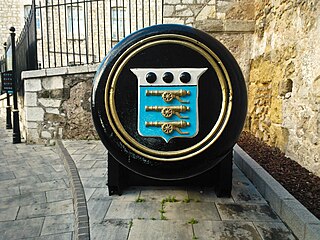 W
WThe Board of Ordnance was a British government body. Established in the Tudor period, it had its headquarters in the Tower of London. Its primary responsibilities were 'to act as custodian of the lands, depots and forts required for the defence of the realm and its overseas possessions, and as the supplier of munitions and equipment to both the Army and the Navy'. The Board also maintained and directed the Artillery and Engineer corps, which it founded in the 18th century. By the 19th century, the Board of Ordnance was second in size only to HM Treasury among government departments. The Board lasted until 1855, at which point it was disbanded.
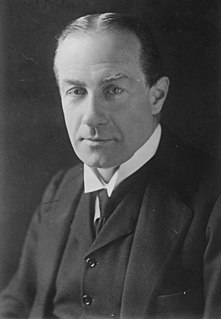 W
W"The bomber will always get through" was a phrase used by Stanley Baldwin in a 1932 speech "A Fear for the Future" given to the British Parliament. His speech stated that contemporary bomber aircraft had the performance necessary to conduct a strategic bombing campaign that would destroy a country's cities and there was little that could be done in response. It concluded that the conduct of future wars would require one to "kill more women and children more quickly than the enemy if you want to save yourselves."
 W
WThe postal service of the British Army is today provided by the British Forces Post Office but its origins may be traced back to Saxon times.
 W
WThe Clerk of the Deliveries of the Ordnance was a subordinate of the Master-General of the Ordnance and a member of the Board of Ordnance from its constitution in 1597. He was responsible for keeping record of the number and kind of stores issued from the stocks of ordnance. The office was abolished in 1830.
 W
WThe Clerk of the Ordnance was a subordinate of the Master-General of the Ordnance and a member of the Board of Ordnance from its constitution in 1597. He was responsible for the correspondence and for the financial bookkeeping of the Board. The office was abolished in 1857.
 W
WThe Debatable Lands, also known as debatable ground, batable ground or threip lands, lay between Scotland and England. It was formerly in question as to which it belonged, when they were distinct kingdoms. The name either signifies litigious or disputable ground, or it comes from the Old English word 'battable'.
 W
WA disappearing gun, a gun mounted on a disappearing carriage, is an obsolete type of artillery which enabled a gun to hide from direct fire and observation. The overwhelming majority of carriage designs enabled the gun to rotate backwards and down behind a parapet, or into a pit protected by a wall after it was fired; a small number were simply barbette mounts on a retractable platform. Either way, retraction lowered the gun from view and direct fire by the enemy while it was being reloaded. It also made reloading easier, since it lowered the breech to a level just above the loading platform, and shells could be rolled right up to the open breech for loading and ramming. Other benefits over non-disappearing types were a higher rate of repetitive fire and less fatigue for the gun crew.
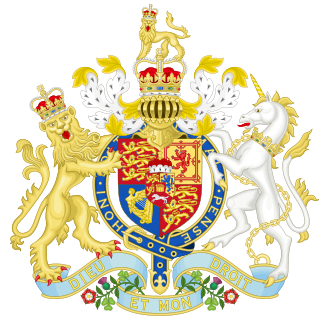 W
WThe Enlistment Act 1794 allowed the British government to create regiments of émigrés from France. This specific legislation was needed to enlist men who were not British subjects in the British Army and to allow George III to commission foreigners as officers. The Act was a major break from the military conventions about enlisting soldiers from other states in the Eighteenth Century. The Act expired with the Peace of Amiens.
 W
WThe Foreign Enlistment Act 1870 is an Act of Parliament of the Parliament of the United Kingdom that seeks to regulate mercenary activities of British citizens.
 W
WHamburg Commonwealth War Graves Commission Cemetery is a war cemetery which was built and is looked after by the Commonwealth War Graves Commission (CWGC). The war graves of 676 Commonwealth service personnel from World War I and 1,889 from World War II are located near Chapel 12 in the greater Ohlsdorf Cemetery in the Ohlsdorf quarter of Hamburg.
 W
WHoni soit qui mal y pense is a Middle French maxim, meaning "shamed be whoever thinks bad of it", usually translated as "shame on anyone who thinks evil of it" and used as the motto of the British chivalric Order of the Garter. In current French usage, the phrase may be used ironically to insinuate the presence of a hidden agenda or a conflict of interest.
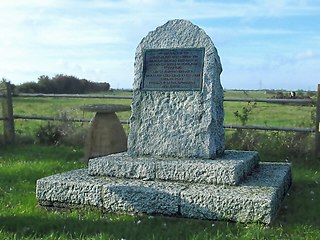 W
WThere are several contenders for the title of last battle on British or English soil, depending largely on how one defines battle and how one classifies various events.
 W
WWhile Bermuda technically remains the responsibility of the government of the United Kingdom, rather than of the local Bermudian Government, the island still maintains a militia for the purpose of defence.
 W
WThe Military Service Act 1916 was an Act passed by the Parliament of the United Kingdom during the First World War.
 W
WThe Ministry of Defence Main Building or MOD Main Building, also known as MOD Whitehall or originally as the Whitehall Gardens Building, is a grade I listed government office building located on Whitehall in London. The building was designed by E. Vincent Harris in 1915 and constructed between 1939 and 1959 on the site of the Palace of Whitehall. It was initially occupied by the Air Ministry and the Board of Trade before in 1964 becoming the current home of the Ministry of Defence.
 W
WBetween 1593 and 1815, Great Britain was the most constant of France's enemies. Through its command of the sea, financial subsidies to allies on the European mainland, and active military intervention in the Peninsular War, Britain played the central role in Napoleon's downfall even as all the other major powers switched back and forth.
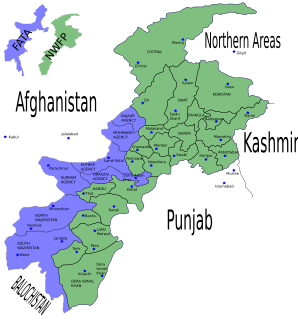 W
WThe North-West Frontier was a region of the British Indian Empire. It remains the western frontier of present-day Pakistan, extending from the Pamir Knot in the north to the Koh-i-Malik Siah in the west, and separating the modern Pakistani frontier regions of North-West Frontier Province, Federally Administered Tribal Areas and Balochistan from neighbouring Afghanistan in the west. The borderline between is officially known as the Durand Line and divides Pashtun inhabitants of these provinces from Pashtuns in eastern Afghanistan.
 W
WThe Silvertown explosion occurred in Silvertown in West Ham, Essex on Friday, 19 January 1917 at 6.52 pm. The blast occurred at a munitions factory that was manufacturing explosives for Britain's First World War military effort. Approximately 50 long tons of trinitrotoluene (TNT) exploded, killing 73 people and injuring 400 more, as well as causing substantial damage in the local area. This was not the first, last, largest, or the most deadly explosion at a munitions facility in Britain during the war: an explosion at Faversham involving 200 long tons of TNT killed 105 in 1916, and the National Shell Filling Factory, Chilwell, exploded in 1918, killing 137.
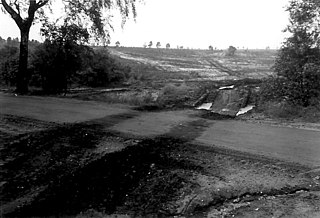 W
WThe Soltau-Lüneburg Training Area (SLTA) was a British and Canadian military training area in North Germany from 1963 to 1994. It was governed by the Soltau-Lüneburg Agreement between the Federal Republic of Germany, the United Kingdom and Canada. The area was located in the Lüneburg Heath in the state of Lower Saxony and was used particularly by tanks and other armoured vehicles.
 W
WSt. David's Battery, also known during wartime as the "Examination Battery", was a fixed battery of rifled breech-loader (RBL) artillery guns, built and manned by the Royal Garrison Artillery and the Royal Engineers, and their part-time reserves, the Bermuda Militia Artillery and the Bermuda Volunteer Engineers, part of the Bermuda Garrison of the British Army.
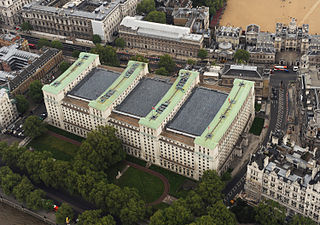 W
WAt the end of the Cold War in 1989 the British Armed Forces structure was as follows:
 W
WThe War Department was the United Kingdom government department responsible for the supply of equipment to the armed forces of the United Kingdom and the pursuance of military activity. In 1857 it became the War Office. Within the War Office, the name 'War Department' remained in use to describe the military transport services of the War Department Fleet and the War Department Railways.
 W
WThe War Office was a Department of the British Government responsible for the administration of the British Army between 1857 and 1964, when its functions were transferred to the Ministry of Defence. It was equivalent to the Admiralty, responsible for the Royal Navy, and the Air Ministry, which oversaw the Royal Air Force. The name "War Office" is also given to the former home of the department, located at the junction of Horse Guards Avenue and Whitehall in central London. The landmark building was sold on 1 March 2016 by HM Government for more than £350 million, on a 250-year lease for conversion into a luxury hotel and residential apartments.